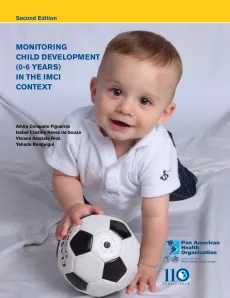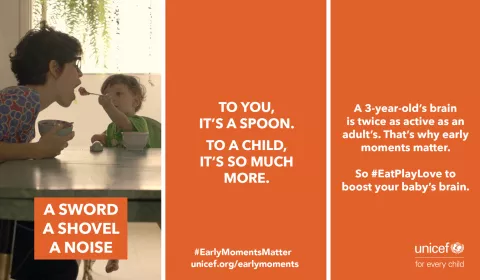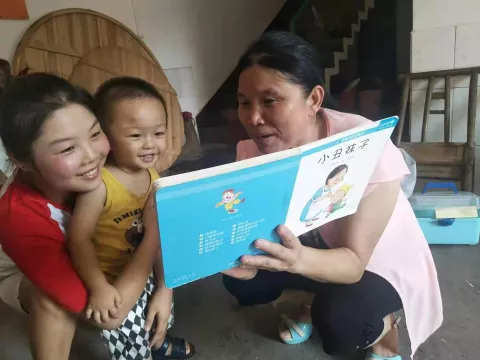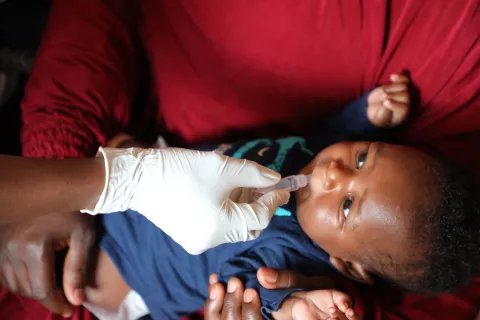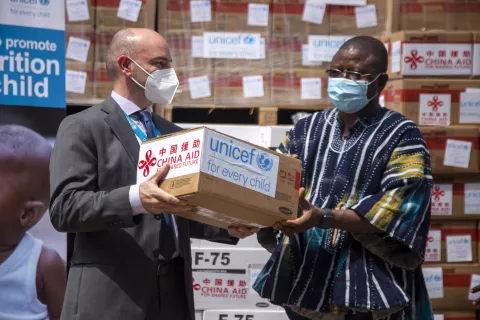Monitoring Child Development (0-6 Years) in the IMCI Context
儿童发育监测与评估(0-6岁)
- Available in:
- 中文
- English
Highlights
Providing children with opportunities to develop fully may well be the most important contribution that can be made to the human species. Satisfactory child development, especially in the first years of life, helps to maximize children's likelihood of getting an education and becoming fully active citizens who are able to cope with the vicissitudes of life and thus reduce social and economic disparities in society.
This manual was developed as part of the instructional materials for the Course in Monitoring Child Development in the IMCI Context. It is intended for professionals in the basic health network rather than specialists in child development. It contains basic information on development during the first 6 years of life that every primary care health professional should know in order to counsel parents adequately on monitoring their child's normal development and, in the event of delays or difficulties, on what decisions to make. It is not meant as a diagnostic test but rather as a general, easy-to-apply assessment tool. Its purpose is to encourage primary care professionals to assess development in children under 6 years old with an understanding of why this is so important. Early diagnosis will most certainly give developmentally delayed children a better chance, since it opens up the possibility to seek specialized care as early as possible and thus improve their quality of life.
Monitoring a child's development in the first years of life is of the utmost importance, since this is the stage of extrauterine life when nerve tissue grows the fastest and matures—and is therefore the most vulnerable. Because of children's great plasticity, it is also the period during which they respond best to therapy and to the stimulation they receive from their environment. For all these reasons, it is fundamental that health professionals, families, and communities take advantage of this time to monitor the development of all children.
“Development monitoring includes all activities related to the promotion of normal development and the detection of developmental problems in the course of primary child health care. It is a flexible, ongoing process based on information received from health professionals, parents, teachers, and others” (Huthsson & Nicholl, 1988).
“Primary health care is essential health care based on practical, scientifically sound and socially acceptable methods and technology made universally accessible to individuals and families in the community through their full participation and at a cost that the community and country can afford to maintain at every stage of their development in the spirit of selfreliance and self-determination” (Declaration of Alma-Ata, 1978).
As a result, if child development monitoring is to be incorporated effectively into primary health care, health professionals must have a basic knowledge of child development. They need to know how a normal child behaves, understand the risk factors that can contribute to developmental impairments, and recognize behavior that may be indicative of a problem. To do this, they need to use methods that are simple, accessible, scientifically proven, and socially acceptable.
In an effort to simplify child development monitoring and incorporate it into primary health care operations, this manual follows the methodology adopted for Integrated Management of Childhood Illness. It is designed to systematize care and make it easier for the health professionals to advise parents on how to encourage normal development in their children and detect problems early. Children showing any warning signs should be referred to and assessed by professionals who have in-depth knowledge of child development and are therefore the most capable of determining not only whether or not there is a real problem requiring further study, but also what treatment is the most appropriate.
In this second edition, the assessment has been extended to the age of 6 years, taking into account the need to monitor children up to that age, as well as in response to requests we received from health services that had already been trained in the use of the previous manual. As a result of the lessons learned from training professionals in several countries of the Americas, we have also improved the sensitivity of the methodology, to enable earlier capture of children who present any deviation from the norm with regard to their development.
